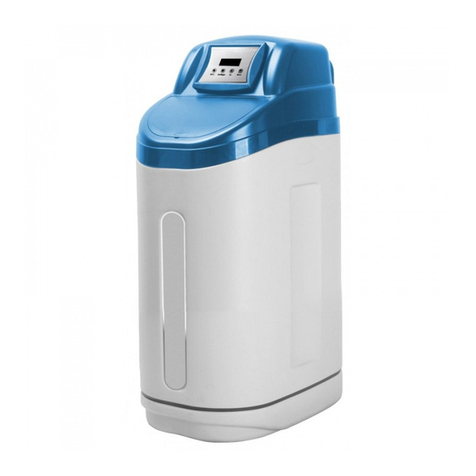3.4 INSTALL BYPASS
Cut open the main water supply in
order to install direct connections to
the softener or to install the Bypass
(recommended). Follow the arrows
on both, bypass and softener for the
water inlet and outlet.
Please note - the inlet filter
is not required in the UK.
3.5 CONNECT DRAIN
Connect both drain outlets (#12) to a
local drain (with an air gap, using the
provided Open Drain Connector, see
par. 3.7) by means of the provided
13mm flexible drain pipe. In order to
guarantee that the device will keep
on functioning perfectly in the future,
this drain pipe is spirally reinforced
to avoid later blocking and/or kinks.
It is possible that both drains are
connected with each other through
a Y-piece. In this case, connect the
Y-piece to the local drain. Please
protect the drain against frost and
heat (min. temp. 5°C, max. temp.
40°C).
When another drain pipe is
used, the guarantee on the unit
is expired.
CAUTION: before installing the
softener,set the Bypass in “bypass”
mode, not in “service”.




























